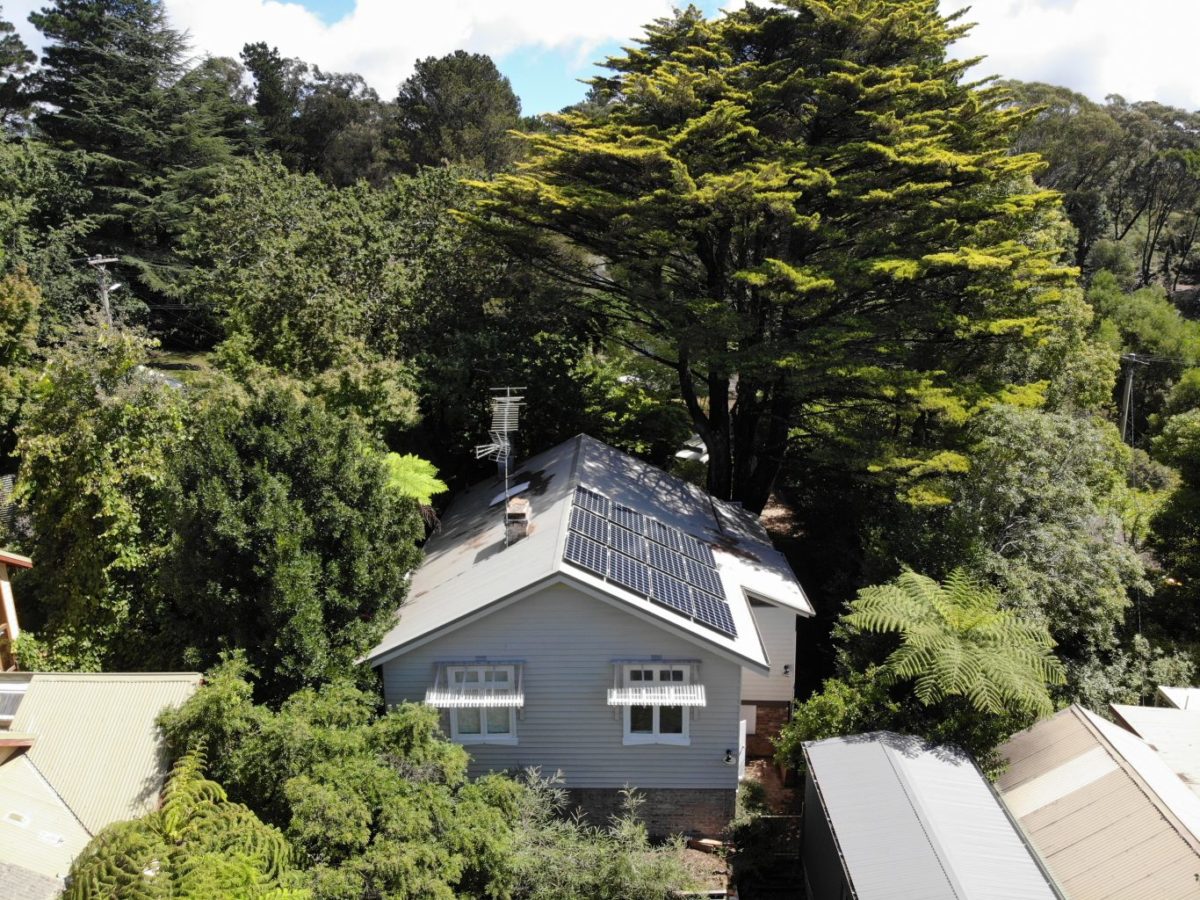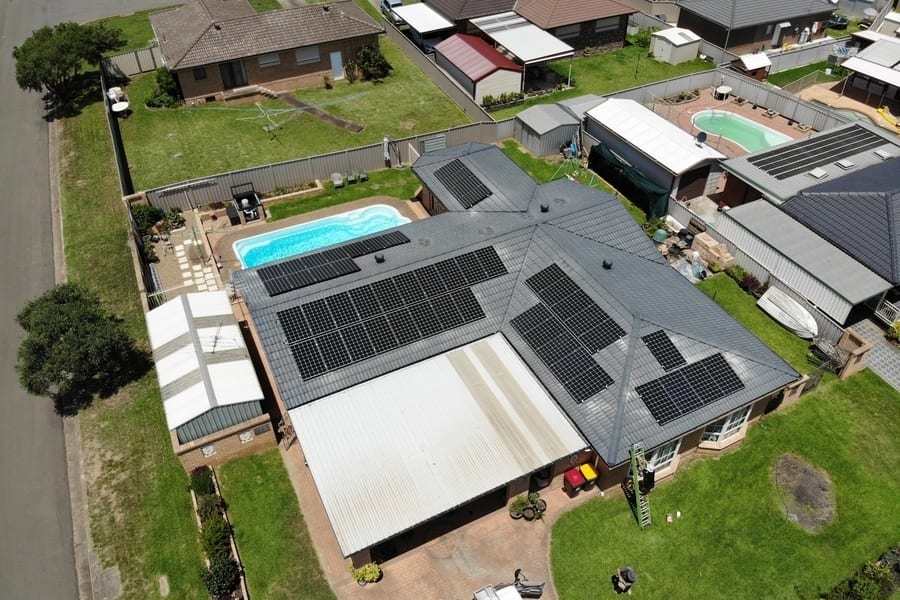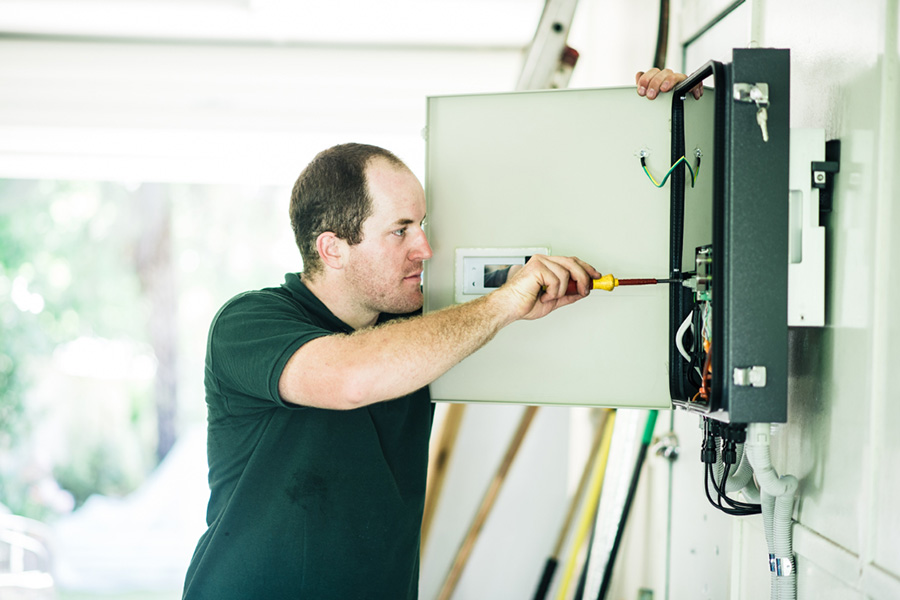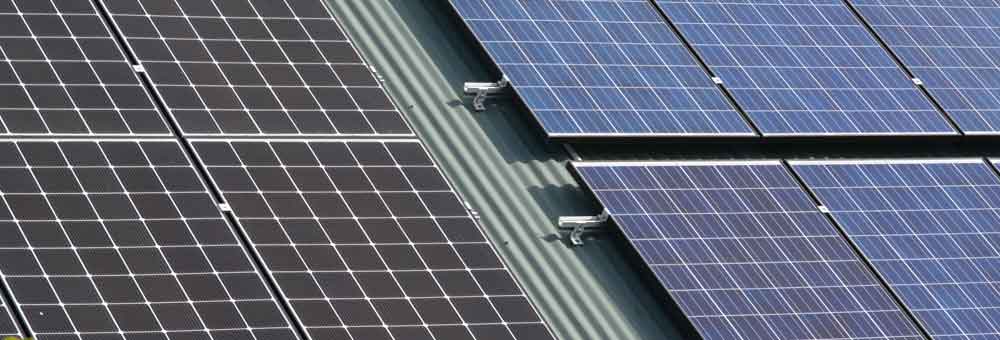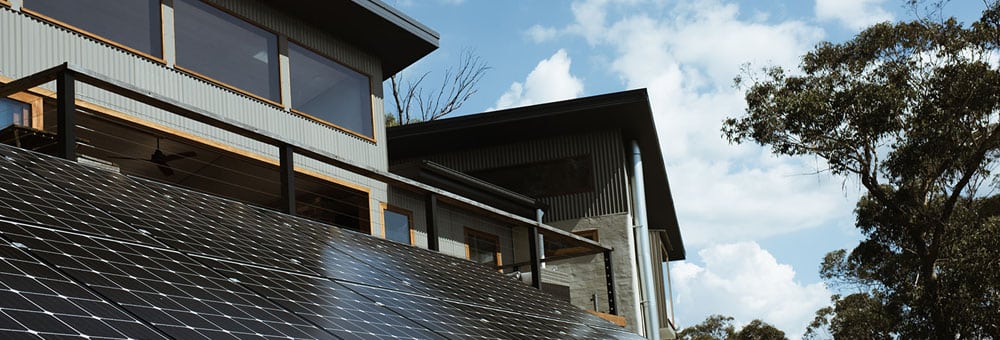Whether you already have a solar system installed or not, it is important that you understand the main components.
LG Energy has a comprehensive list of information on everything solar, so we’ve put together some of the most relevant and frequently asked questions we get about key solar system components from their website.
A solar system can be connected to the grid using a Gross Meter or Net Meter.
Today most of the solar power electric systems are installed under the Net Meter scheme. A Net metering system means your inverter sends the electricity your system generates to the meter box, and from the meterbox into your house.
If you consume electricity in your house at that point in time the solar system will supply it, therefore this electricity is “free”.
If the amount of electricity generated by your solar power system is more than you consume at that point in time, the additional electricity is exported back to the grid to be used by other people.
Your Net electricity meter then measures how much you exported. The payment you receive for this exported electricity is called the feed-in-tariff. Currently it ranges from 11c to 15c per kWh exported, while you pay between 20c and 45c usually for one kWh of electricity used. At night you import electricity and the Net meter measures how much you consumed and adds it to the electricity you consumed during the day from the grid.
The rate of feed-in-tariff you get paid varies from State to State and from energy company to energy company. We suggest you shop around. Your solar power system installer may be able to guide you as to which energy retailer offers the best feed-in-tariff rate.
Under Gross Meter scheme all the electricity generated by your solar system is exported back to the grid and you are paid for it usually by way of a credit on your electricity bill. The payment you receive for this exported electricity is called the feed-in tariff, and in the early days of solar were as high as 60c per kWh.
The Gross Meter measures the entire output of the system separately to your electricity consumption. Gross metering support plans ceased to be offered in NSW by 2011 and expired in late 2016. but in other states will be still keep going as long as the mid 2020s. . Net There are no new entrants allowed into these historically very generous support schemes.
Australia, being in the Southern Hemisphere sees the sun rise from the East and set in the West. In the middle of the day, the time of best solar irradiation, the sun sits North. There is also a variance throughout the seasons in solar radiance because of the solar solstice. The solstice is an astronomical event that occurs twice each year as the Sun reaches its highest or lowest point relative to the equator.
With the exception of southern facing or shaded roofs, most roofs are suitable to install solar. In Australia, particularly with Net Metering systems, it is important that the solar panels are located taking your own electricity consumption pattern into account. For example if you use most electricity in the morning and during the earlier part of the day then install the panels on the eastern roof. If you after the most solar electricity output from mid morning to early afternoon install the panels on the northern roof. If your children come home at 3pm and turn on all appliances, or you want to offset your air conditioner use as much as possible late in the afternoon, then you want as much solar electricity as possible in the afternoon. Therefore install the system on your western roof. Or if you get a 4 or 5 KW system you can put one solar module string on the northern roof and one string of panels on the eastern or western roof to get the whole day supplied with solar power.
While an eastern or western roof installation will produce between 5% and 15% less electricity than solar panels facing true north, the time you require the electricity and the aesthetic look of the solar system on your house are also important considerations when deciding on where to position the panels.
Net meters work by continuously sampling how much electricity is being generated and how much electricity is consumed at your home. At each point in time the meter instantaneously reads the generation and consumption of the premises and the meter records both these amounts. The data is then accumulated in the appropriate register over the billing cycle. The meter is read and the bill is calculated. Now that high government sponsored feed-in tariff have stopped to be available for new customers, it is very likely that a net meter is the best way to meter your electricity after you solar power system has been installed.
Under net metering, the electricity generated by your system and consumed in your home, you pay nothing for this electricity. Whenever the solar power system generation exceeds your homes consumption, this excess amount is exported to the grid and you may earn a feed-in tariff for this exported solar electricity. Check your energy retailers solar feed-in tariff policy.
Therefore, each kWh of electricity your solar system generates and you consume in a billing period, saves you the retail price you would normally pay per kWh to your electricity retailer. For example your solar system generates 15kWh of electricity on a specific day. You use 12 KWh in your house on that day and export 3 kWh. Your electricity price charged by your electricity retailer is 35 cents per kWh and they pay you 10c in feed in tariff for each kWh.
Therefore that day your solar system earned you 12 kWh of electricity at 25 cents you did not have to buy = $3.00 and 15 cents you earned for your exported electricity. Total value of the electricity generated that day will be $3.15.
As Australia is in the Southern hemisphere, the solar panels produce most power when they are pointed directly at the sun i.e. North. The orientation of the panels and the angle they are tilted will have a greater effect on annual energy production.
Most Australian homes have a roof pitch of 20° to 30° which is considered optimum for maximizing solar power generation. However, the panels can be installed anywhere between 10 to 35 deg with negligible efficiency loss. A minimum tilt of 10° is recommended to ensure self-cleaning by rainfall.
Whilst flat installation on roofs is possible, please consider that dust and debris are less likely to be washed off, if the panel is not tilted at least 10 degrees. More frequent panel cleaning by hand might have to be considered in such installation situations.
If your roof’s slope is not ideal, contact your nearest LG solar installer who will advise you on the correct orientation and elevation of your panel. Maybe a tilt frame is an option that could be considered.
Panel sizes don’t affect the outcome. A 3.6kWh system is what it says – a 3600W system which can be made up of panels of any size. However in urban areas where roof space is at a premium, higher wattage panels like LG’s 360 NeON R panels, help you put panels that generate more power on your roof.
Solar panels are designed to withstand varying weather conditions for many years. Hail, frost and very hot weather are part of the Australian landscape. LG panels are designed and tested to withstand hail stones up to 28mm, 90 degree hot temperatures and up to -40 degree frost.
Nevertheless should extreme hailstones cause any damage to your solar system most of the home insurance companies cover hail damage as the solar system installed on the roof is part of your building. However, different insurance companies can have different rules. We suggest you should find out if your solar power system is covered in your particular circumstances.
Solar systems can be operated with batteries and it is conceivable that you disconnect from the grid. These systems are called off grid solar systems. Nevertheless, such systems require a substantial battery bank which adds significantly to the cost of the solar power system. In most cases an off grid system only makes sense in remote areas.
Lithium storage batteries have been offered to the market since mid 2015. Pricing has already dropped and will continue to reduce. It is anticipated that in the future small storage system for homes will come to the market at even more reasonable prices and this will allow you to use your stored solar power during sunless periods during the day and at night.
You will need certain preconditions to disconnect from the grid in an urban environment
- A large roof space facing N, NW, NE and potentially also East and West.
- High productivity panels that enable you to generate more solar power per square meter. For example, the LG NeON 2 panel is rated 315W in contrast to most other panels that are rated 260W-265W.
- Large capacity, affordably priced solar batteries for daily storage to consume at night. This is a new, burgeoning market that is offering batteries with greater storage capacity at cheaper prices.
- Affordable long term storage. The greatest storage capacity at the moment is between 15-20kW. To disconnect from the grid, a household would need to store at least a weeks supply of power to allow for rainy days.That would require 100-200kW of storage capacity. Also there are less sunlight hours in winter so affordable long term solutions to store excess summer power needs to be developed with 1000-2000kW capacity.
The time of high, government sponsored feed in tariffs has ended, in most cases a net solar meter will best suit your property. Gross meters measure all the electricity generated by your system and all the electricity is exported to the grid. At the time of high feed in tariffs (2009 to 2012), Gross meters were the preferred metering option.
In a net metering situation the solar power system generates electricity and this “solar electricity” then supplies your home/businesses’ electricity needs. What you do not use is exported to the power grid. Make sure your individual electricity retailer gives you a credit for the exported electricity. If they do not, you can explore the options from other electricity retailers for the best offer and option suitable for you. Your local solar installer might be able to recommend the electricity retailer offering the highest feed in tariff.
Solar panels are used for a variety of applications from a small garden solar light to space stations and satellites. The use of the solar product determines the size of the panel. In residential solar systems the large panels with average outputs from 250W to 320W are used. LG’s 285W, 300W and 320W panels have been optimised to give you the best value for money.
Your electricity meter in the switchboard collects a range of data on how much electricity you consume and how much you generate via the solar system. Strict rules are in place to guide metering practices within the electricity marketplace including measurement requirements. These are set out in the National Electricity Rules.
The data measured by your electricity meter is provided to:
- your electricity retailer; and
- the market operator (the Australian Energy Market Operator).
The actual generation and consumption data sent to the electricity retailer is used to calculate your solar bonus payments (feed-in tariff) and your consumption after your solar system supplied your home.
Metering arrangements can vary across different states and energy supply companies. However, the meter measures your electricity consumption and generation continuously, and it is measured in kilowatts per hour (kW/h). This data is then captured, usually for three monthly readings, so that the information can be used for billing purposes.
Learn more about key solar system components on the LG Energy site. Contact E-Smart Solar about any questions you may have about solar.

